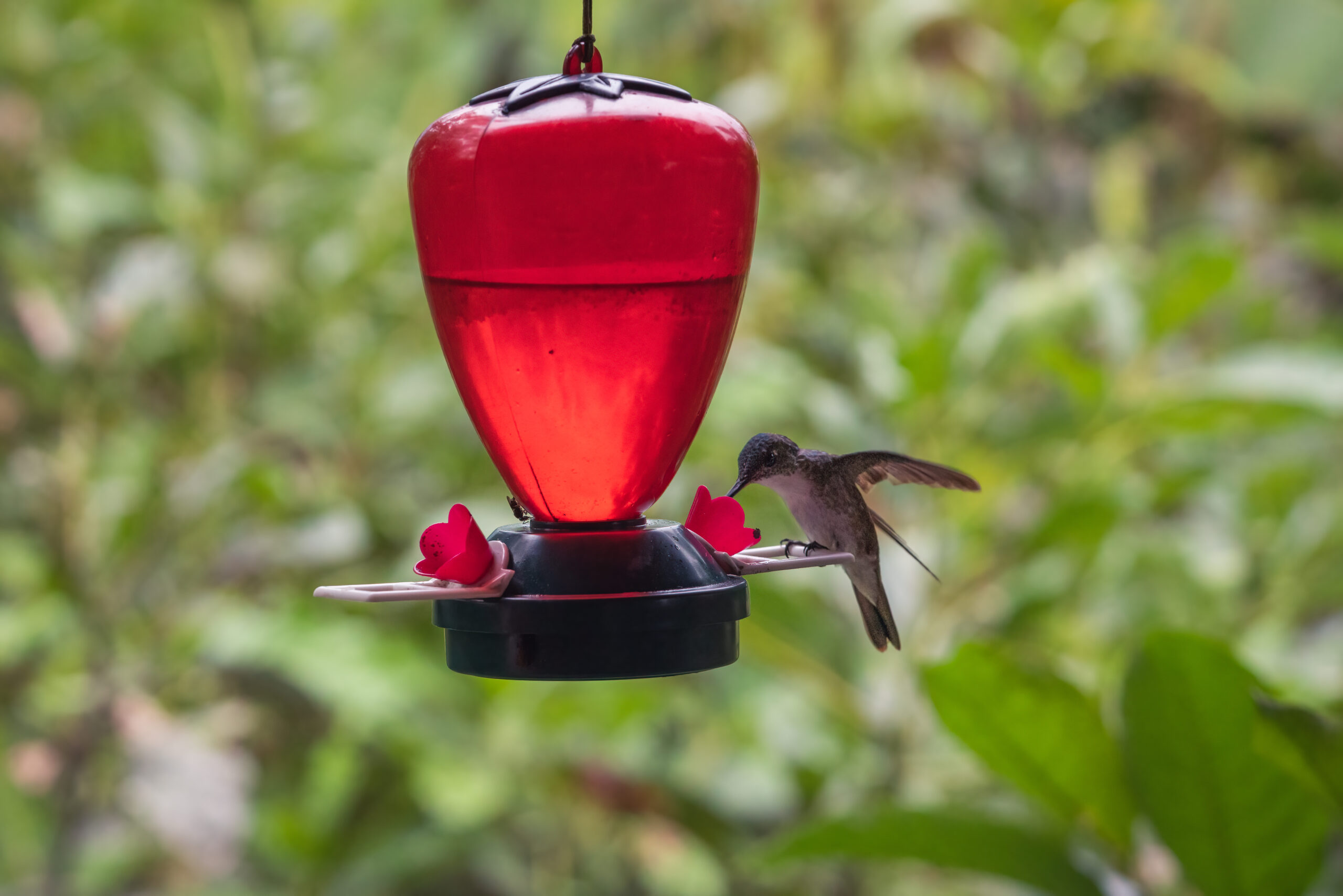- LIFE
How to Care for Orchids Indoors


Hummingbird feeders bring a delightful burst of life to any garden, attracting these vibrant birds with the promise of sweet nectar. However, they also attract unwanted visitors: ants. These tiny invaders can quickly turn a pleasant experience into a frustrating one as they swarm the feeders, deterring hummingbirds and contaminating the nectar. Fortunately, there are numerous effective strategies to keep ants out of hummingbird feeders. By employing a combination of modern solutions, historical methods, and natural deterrents, you can ensure that your feeders remain a safe haven for hummingbirds.
One of the most popular and effective tools for keeping ants away from hummingbird feeders is the ant moat. An ant moat is a simple device that creates a water barrier ants cannot cross, effectively protecting the feeder from invasion.
Ant moats come in various designs, but they all serve the same purpose. Some are built into the feeder, while others are standalone accessories that hang above the feeder. Popular models include the Perky-Pet Ant Guard and the Trap-It Ant Moat, both of which are easy to use and highly effective.
If you prefer a more hands-on approach, creating a DIY ant moat is straightforward. Simply take a shallow container, such as a bottle cap or small dish, and fill it with water. Hang it above the feeder using a sturdy wire or string. This simple solution is both cost-effective and efficient in preventing ants from reaching the nectar.
Fishing line is another innovative method to deter ants. Ants struggle to navigate the slippery surface of fishing line, making it an excellent choice for suspending feeders.
To use fishing line, replace the existing hanging mechanism of your feeder with a strong fishing line. Ensure the line is securely fastened and capable of supporting the weight of the feeder. This method not only helps in keeping ants at bay but also adds an element of invisibility, creating an illusion of a floating feeder.
For those who prefer natural methods, several deterrents can be used to keep ants away without harming them or the environment. These solutions are particularly appealing to eco-conscious gardeners.
The location of your hummingbird feeder plays a crucial role in minimizing ant problems. By strategically positioning feeders, you can reduce the likelihood of ant invasions.
Avoid placing feeders directly under trees or close to structures that ants can use to access them. Instead, hang feeders from isolated branches or poles in open areas. Ensure there’s enough space around the feeder to prevent ants from bridging the gap.
Several manufacturers offer ant-proof hummingbird feeders designed to prevent ant access effectively. These feeders often incorporate built-in ant moats or other deterrent features.
Among the top choices are the Aspects HummZinger HighView Feeder and the More Birds Ant Moat Feeder. These products provide reliable ant protection while ensuring easy access for hummingbirds.
Before modern solutions became widely available, gardeners relied on traditional methods to keep ants at bay. These historical techniques can still be effective today, offering a glimpse into the ingenuity of past generations.
Applying a thin layer of grease or oil around the feeder’s hanging point creates a slick surface that ants find difficult to cross. However, care must be taken to prevent contamination of the nectar.
Historically, gardeners would use physical barriers, such as wrapping the feeder’s pole with sticky substances or installing inverted cones, to prevent ants from climbing.
For those who enjoy crafting their own solutions, several DIY options are available to keep ants away from feeders. These methods are not only cost-effective but also customizable to fit specific needs.
Wrap a piece of tape, sticky side out, around the feeder’s hanging point. This sticky barrier can trap ants attempting to reach the nectar, effectively deterring them.
Mix a solution of water, vinegar, and a few drops of essential oil (such as peppermint or eucalyptus) to create a natural repellent spray. Apply this around the feeder’s hanging area regularly to maintain its effectiveness.

Consistent maintenance is key to keeping ants away from hummingbird feeders. By adopting a routine, you can ensure that your feeders remain clean and inviting for hummingbirds.
Regularly clean the feeder with warm soapy water to remove any nectar residue that might attract ants. Rinse thoroughly to ensure no soap remains, which could harm the birds.
Frequently check the area around the feeder for ant trails. If you notice any, take immediate action to disrupt their path using one of the deterrents mentioned above.
Ensure that the feeder is always filled with fresh nectar. Old or fermented nectar can attract ants and other pests, so regular refilling is essential.
By implementing these strategies and maintaining a vigilant approach, you can keep ants out of your hummingbird feeders, ensuring a safe and welcoming environment for these delightful creatures. Whether you opt for modern devices, natural solutions, or historical methods, the key is to remain proactive and consistent in your efforts.